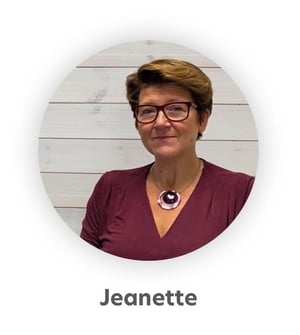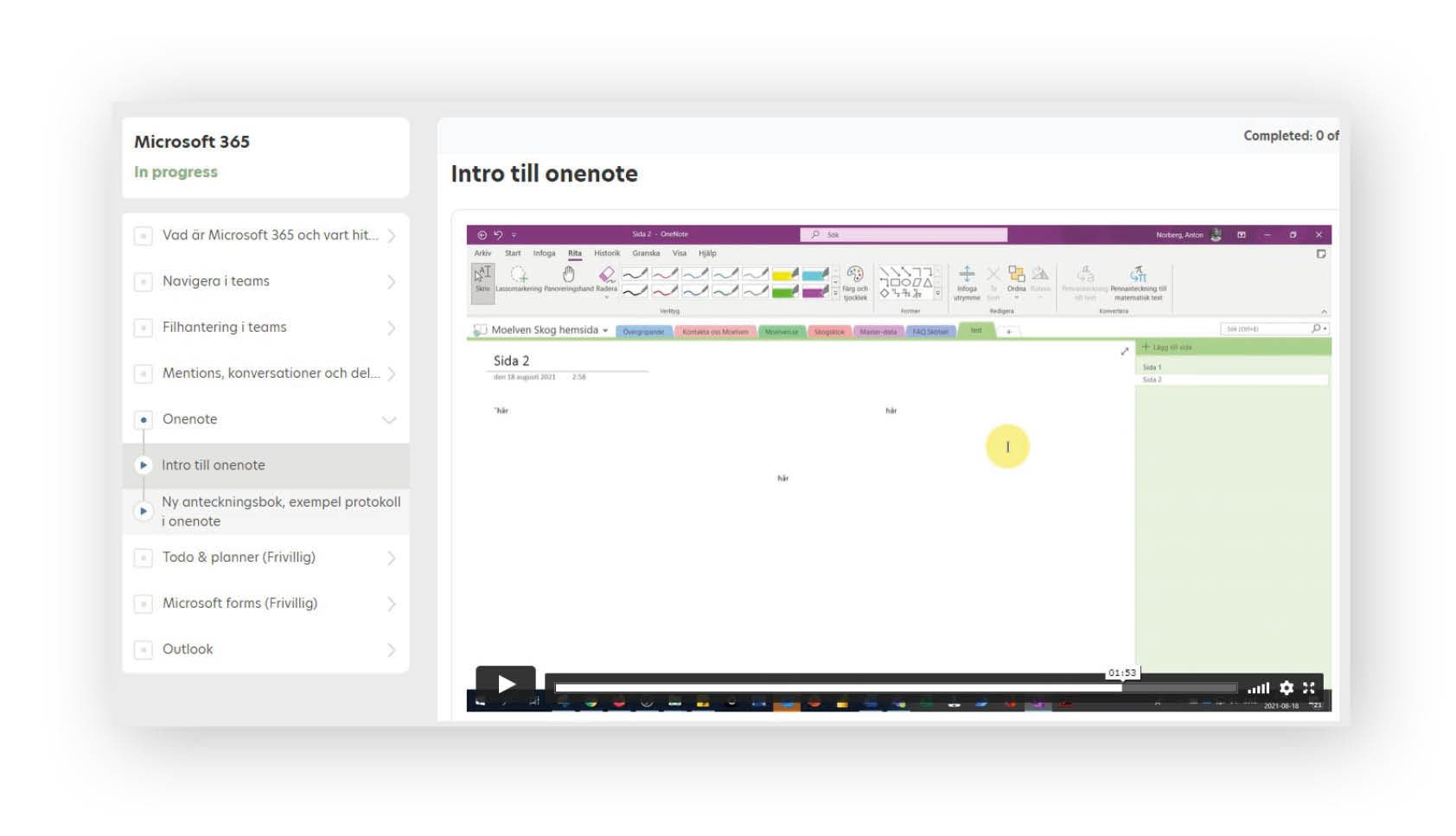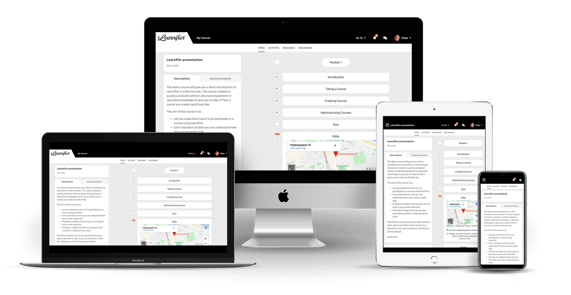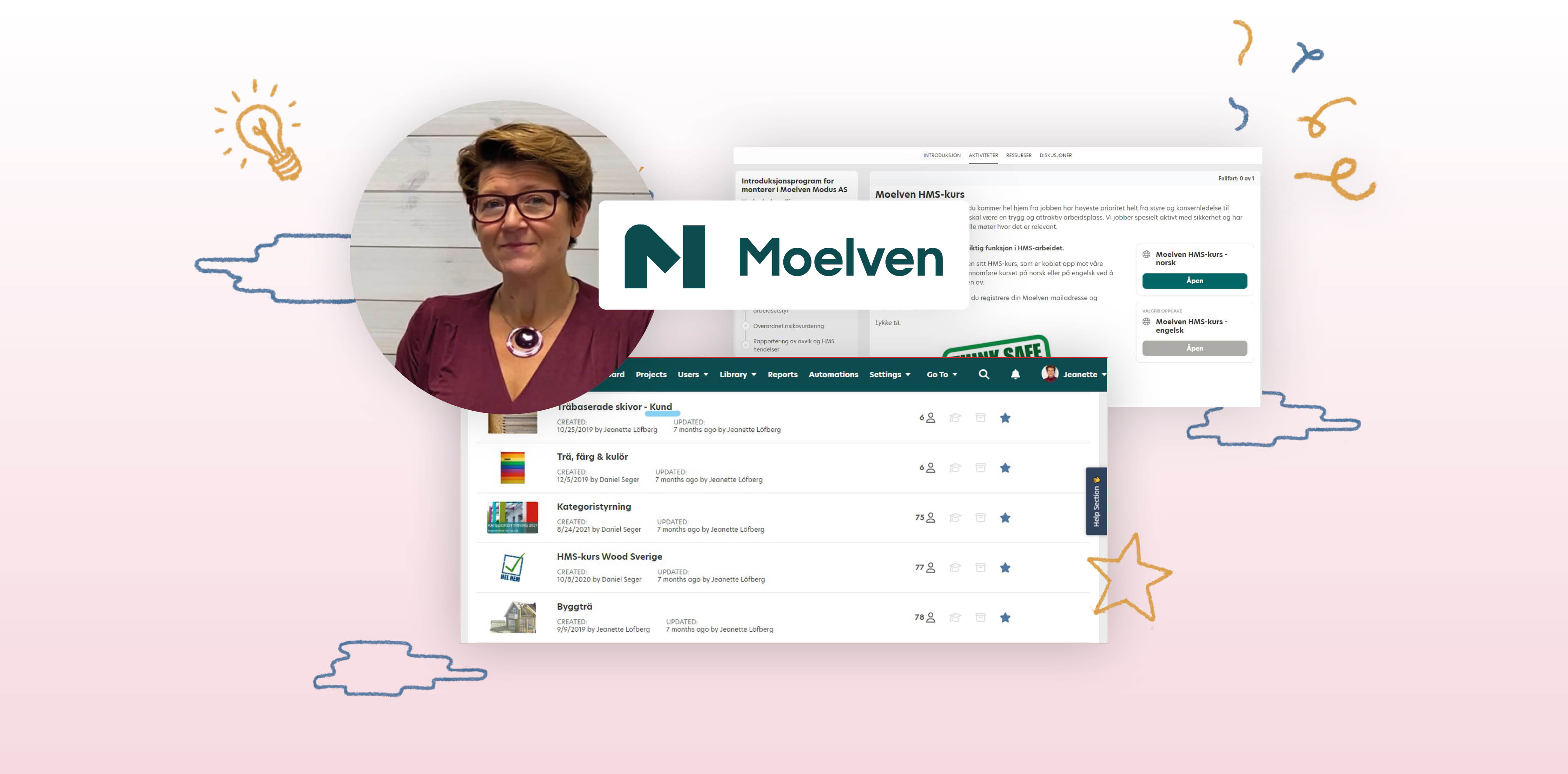The best learnings in life come from watching others at work. Since they started 120 years ago, Moelven has gone from a small Norwegian mill to being one of Scandinavia's largest wood mechanical groups, employing 3400 people. Now, they are in the middle of a digitization of their knowledge sharing and competence development. We talked to their skills developer and the driving force behind the venture, Jeanette Löfberg. In this story she talks about the company’s practical work with learning and development. Jeanette also treats us with her best tips and lessons from the journey so far.

Hi Jeanette, tell us a bit about Moelven!
- We are one of Scandinavia's largest wood mechanical groups. I usually say that we deliver "everything from logs to the world's tallest wooden house." We have the entire chain, from timber procurement, felling, delivery to sawmills and further processing, both for the private and corporate markets. Products can be, for example, wood panels and terrace floors, modules for houses and so on.
How many are you?
- We are about 3400 employees in the organization and have production in Sweden and Norway as well as sales organizations in several places around the globe.
What is your role at Moelven?
- I work centrally within the group as a skills developer, so I basically work with competence in different ways. We have 37 different companies so I am not fully operational in every business, as it wouldn’t work out. A large part of my job is identifying needs in the business, supporting and helping by using the tools available, including our learning platform, Learnifier. My big focus right now is our trainee program.
“Getting everyone involved in digitalization is a challenge. At office level, most are very digital, but if you look at the production level, not everyone find it as easy to absorb the digital part of our trainings. It is not as easy to leave and do a digital training during working hours.”
How many are you in the HR and skills development department?
- We are divided in two groups. Two of us work centrally with everything going on at an overall level. Others work in the divisions and companies as well, where they are responsible for the trainings and skills development there.
What’s the best part about your job?
- Right now it’s meeting the potential candidates for the trainee program that I am supervising.
What challenges do you see in regards of skills development?
- Getting everyone involved in digitalization is a challenge. At office level, most are very digital, but if you look at the production level, not everyone find it as easy to absorb the digital part of our trainings. It is not as easy to leave and do a digital training during working hours.
How do you work operationally with competence development at Moelven?
- Centrally, we try to probe what the companies and divisions need, support and help them use the available tools for skills development. The need for training has to come from them. Then there are certain things that we need to create and run centrally, such as courses in safety, health and work environment. Everyone needs to attend them and we also invite our subcontractors.
In our learning platform, Learnifier, we have made a portal with sub-portals to make working and finding courses at the right level in the organization easier. Right now, there is a lot of focus on the trainee program for those who will have operational engineering roles in the operations. We have also developed courses for those working with processing and selling to the construction trade, so that they can train new staff.

What does the learning journey for example for a trainee look like?
- They start with the safety course that is mandatory for everyone. Divisions or companies tailor and personalize the course or develop other courses that employees can take afterwards as a supplement.
“A great outcome is that the divisions and companies share with each other. 'We have done this, you can look and take what you want.' There is a commitment and a sharing of knowledge, which provides even more effective efforts.”
Who creates the courses?
- Initially, I did a lot. It was good for learning the system and how to think. Since then, I have handed over many parts to, for example, the HSE manager – responsible for health, environment and safety. Sometimes an employee facilitates the course and enlists the help of expert colleagues. It varies.
What did your skills development look like before you became more digital?
- Previously, we had very traditional classroom training. When the pandemic came, we needed to go completely digital. When I started in 2018, I immediately had to go into a large project where one of our divisions wanted to build an education bank. We had a digital learning system in place, but found it very difficult to use. It didn’t correspond to how we wanted to work. Therefore, we took external help to probe the market. We wanted a tool that more people could work in easily, so that we could create courses ourselves without taking external help. We chose Learnifier as it was an easy tool to work in.
"No matter where you work, you should be able to take courses you are curious about, even if they are outside your own field of expertise.”

What is a success linked to your work with training and competence development?
- We now have a system that is available to everyone. We have a completely different efficiency compared to conveying knowledge in traditional ways in classrooms. The knowledge is available to anyone, at any time.
A great outcome is that the divisions and companies share with each other: "We have done this, you can look and take what you want." There is a commitment and a sharing of knowledge, which provides even more effective efforts.
What’s next?
- No matter where you work, you should be able to take courses you are curious about, even if they are outside your own field of expertise. We're trying to do that now. We are also developing an onboarding and courses for different levels of managers, which is exciting.
Insights so far?
- It’s good to create engagement for courses before they are launched, a tip we received from Learnifier. Create an expectation before a new course, like we did when we started the course package: "We are working on this", "the following will come soon." It was well received. Otherwise, it can be a compulsion, like it’s a course they are forced to take. We want to say: "This is a course that will be great for you!"
Another tip is to mix content and not be afraid to repeat certain knowledge. The content of a video can be repeated later in the course, for example.
Also think about who the recipient is, so the course will be easier to absorb. Who do I write for? To write for everyone is to write for no one, as the saying goes.
Interview by: Rebecca Cannerfelt
_______________
Experience the learning platform that Moelven uses to create and administer their trainings!
Over 300 companies and organizations of all sizes work with Learnifier to train and develop their people.
Read more, book a personal run-through or try our platform for free

.png?width=153&height=58&name=Learnifier%20TextLogo%20NearBlack%20-%20PNG%20MEDIUM%20-%20800px%20(2).png)





